One of the most fascinating parts of film photography for me is the almost limitless variety of cameras and lenses. More than 100 years of human ingenuity was devoted to creating a dizzying array of cameras that all did the same thing–expose film to light–in so many different ways. Finding myself at a time in life when I have enough funding to spend on what are now very cheap cameras, I have been able to indulge my curiosity. All of which led me last year to rediscover 1980s point-and-shoot cameras when I happened upon one at an estate sale.
Which brings me to today’s camera, an Olympus Quick Shooter Zoom from 1988. This is actually one of several Olympus point & shoots that I’ve found on eBay, and the one that comes closest to my ideal camera for taking on bike rides or stuffing in a pocket when I’m out sightseeing.
About the price … I call this my $900 point & shoot because the Quick Shooter (a really dumb name, by the way) retailed for $420 when it was introduced. At that time, Olympus’ own SLRs could be bought for the same or less, placing the Quick Shooter near the top of the company’s camera lineup in terms of price. And $420 in 1988 inflated to 2020 dollars is $920!
There are so many point & shoots out there that it’s easy to look at them as pretty much the same camera in a slightly different package. The Olympus Quick Shooter stands out for me for several reasons:
- Olympus’ point & shoots have great lenses. The Olympus Quick Shooter is just labeled with “Olympus Lens,” but it’s easily as sharp as any other point-and-shoot in my collection. Maybe a “Zuiko” without the name? Certainly on par with my XA. Focal length ranges from 35mm to 70mm. The 35mm end is great for my purposes; 70mm isn’t quite “tele” enough to make a huge difference.
- The autofocus works flawlessly. Unless I make a concerted effort to make it fail, it nails the focus every time. Looking back at the full roll that the images below came from, the only one that was not in focus was taken of my bicycle’s front wheel as I was riding it, which is a lot to ask of any autofocusing camera.
- The Olympus Quick Shooter actually has a physical switch on the front for the flash settings. Unlike so many other point & shoots–including much more expensive and coveted cameras–the Quick Shooter allows the user to set the flash setting without having to reset it every time. Never want the flash to come on an ruin your street shooting session? Just turn it off on the front. The flash won’t fire until you physically move the switch. So much easier than pressing a tiny button several times every time I turn the camera on!
- Back light compensation is similarly available with a dedicated button, as is a Macro focus mode.
- Similar to my other Olympus point & shoots, there are markings on the lens barrel that are revealed as it extends from the camera to give you the approximate focal length. Want to shoot at 50mm? Extend the lens until “50” shows and you’re there.
- Continous motor drive shooting? Yep, just move the on/off switch one more position to the right.
- It starts right up. The lens does not extend unless you want to zoom in, so startup is instantaneous (but not quiet; the motor that opens the lens shutter is quite loud).
There are, of course, a few design choices that seem a little off. There’s a dedicated button on the top for multiple exposures that I may use once or twice a year. Not sure why Olympus thought we would all be taking multiple exposures that often, but there it is. The lens accepts a 35.5mm filter, but the exposure is done via a separate sensor, so anything other than a UV filter is going to throw the exposure off. This camera came with a UV filter installed, saving me at least $10.
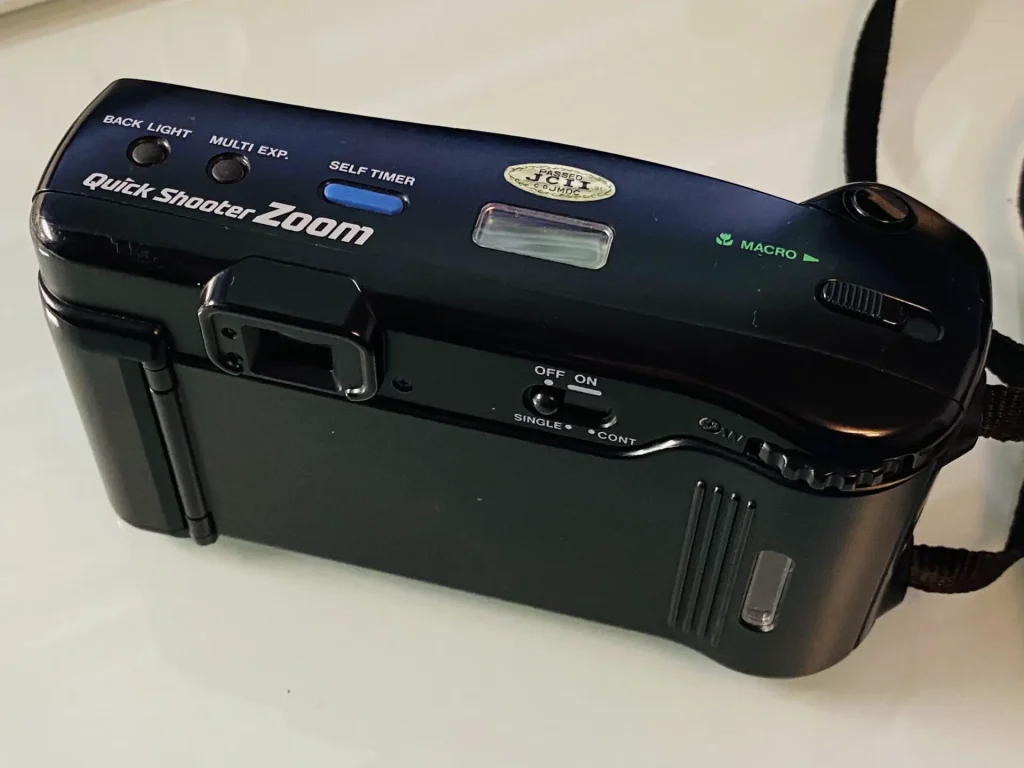
Like other motor-driven point & shoots from the era, it’s also a bit loud. You’re not going to sneak up on anybody if you use the zoom, but I tend to leave it at 35mm all the time anyway.
What would I add to make this camera even better? A control to lock focus on infinity, for shooting through windows or from airplane seats, for a start. Manual ASA would be nice, but not a high priority. Metering like a Minolta HiMatic AF2 that places the sensor under the filter would be great. An indicator in the viewfinder that shows generally where it’s focusing (close vs distant) instead of just a green “focus lock” light.
But I digress … the Olympus Quick Shooter is nearly perfect. Sitting here in the 2020s, with virtually no one making new film cameras, we only have what’s in the past.
So … On to the photos. I loaded the Olympus Quick Shooter with Ilford XP2 Super and carried it as I walked around Mendocino with our poodle. We wandered around the town, and I was particularly taken by the historic graveyards (there are two), with their headstones and monuments dating to the late 1800s. I really like the way XP2 renders images–nice range and virtually no grain. If you’re on vacation and want to get your black and white photos printed by the local photo place, XP2 goes in with the standard C41 color film, making it relatively easy and cheap to process. I developed this at home using CineStill’s C41 kit, a two-chemical system I discovered when the local labs here in Sacramento closed down for COVID. It costs about $25 for a mix to make a liter each of both chemicals, and you can process about 24 rolls, bringing my cost per roll for C41 developing to about $1.
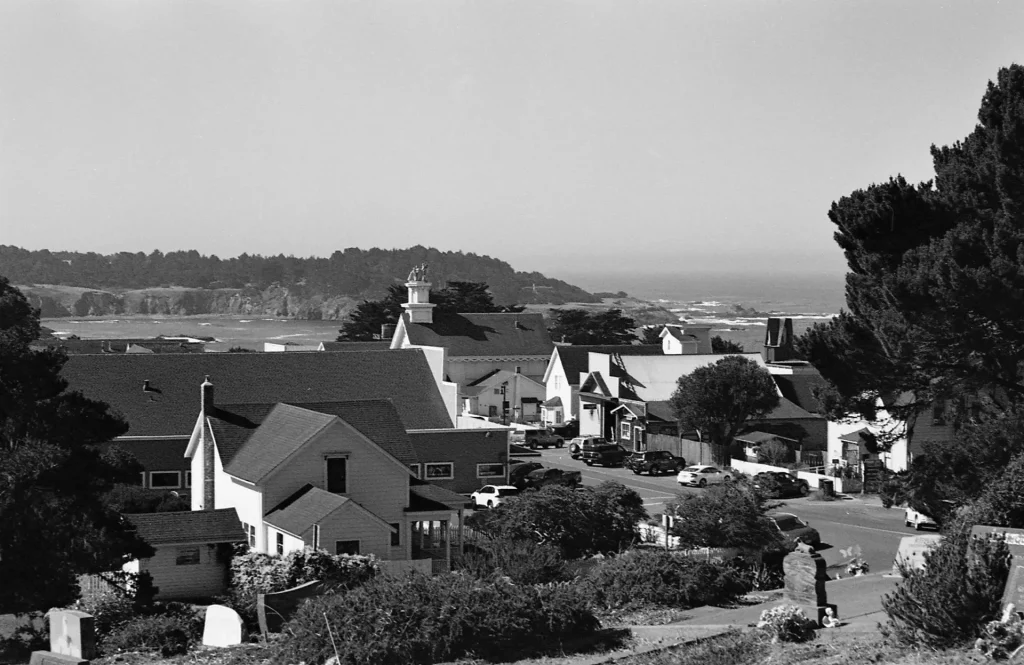
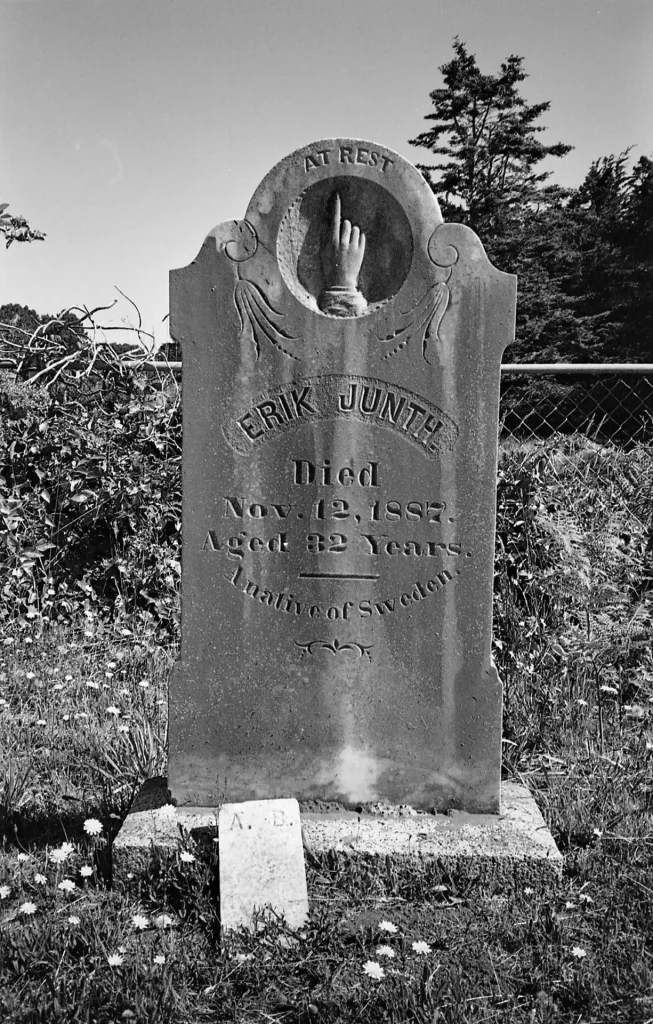
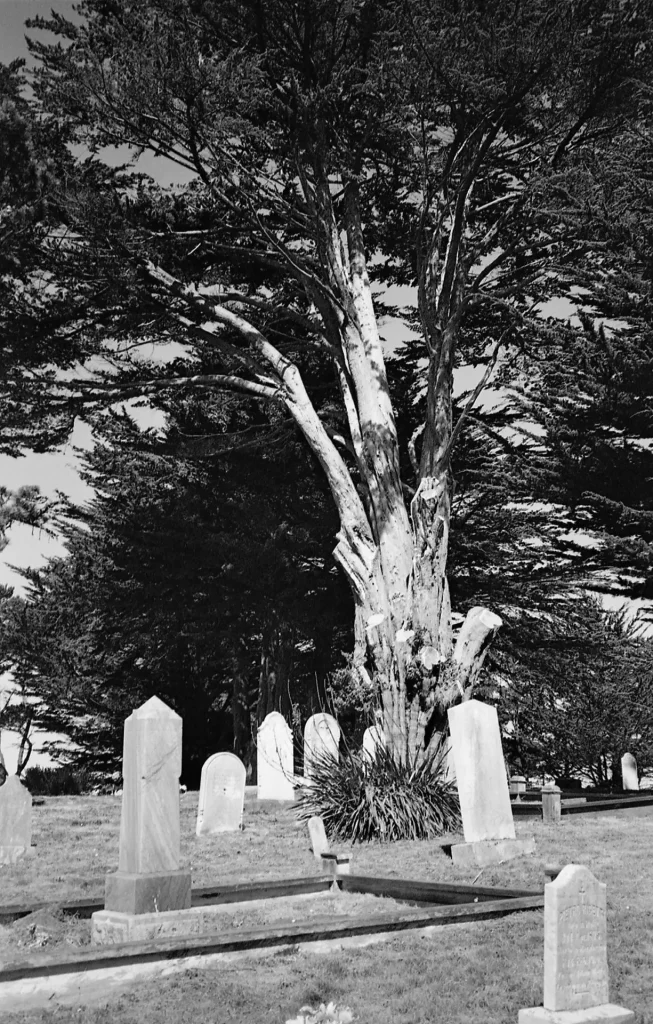
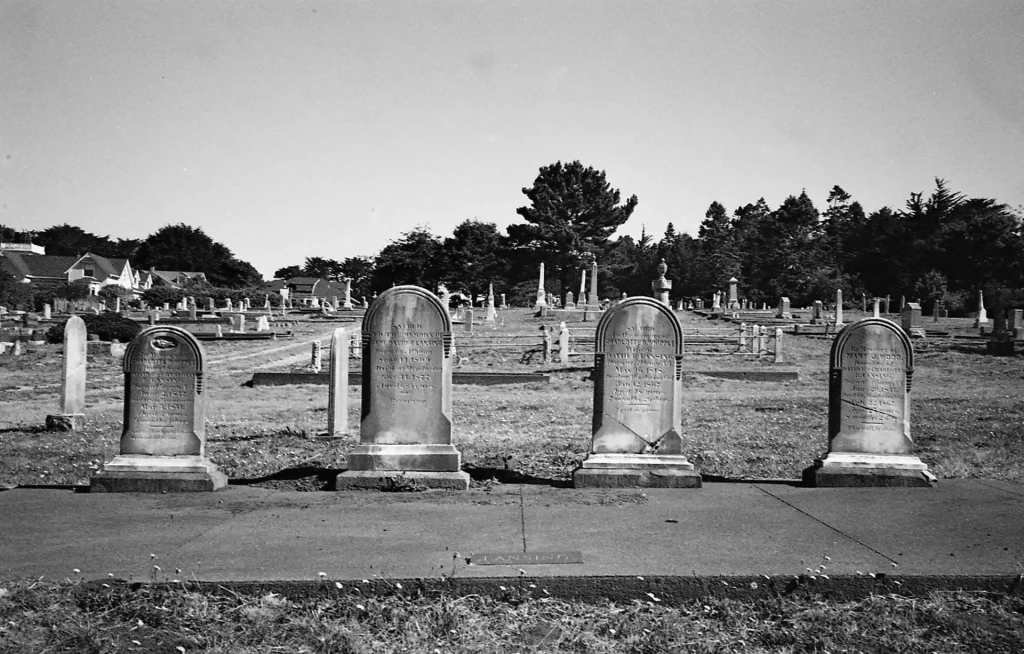
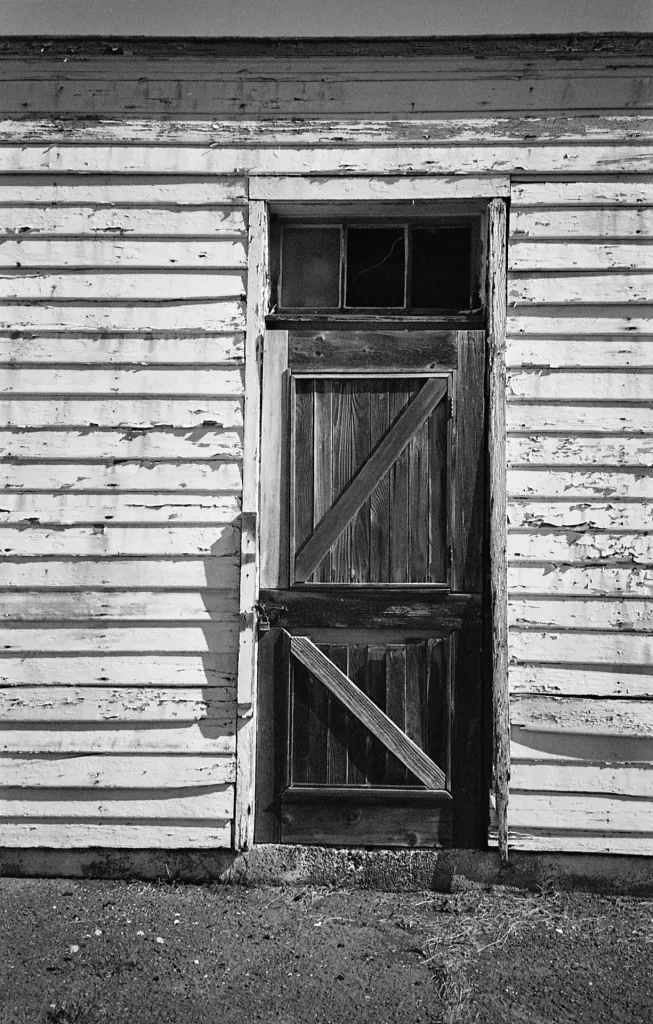
In summary, I very much enjoy the Olympus Quick Shooter. Would I pay $920 for it today? Probably not. But it was well worth the $20 I spent for it on eBay (with a $10 filter and an $8 battery inside, it was practically free!), and it produces great images almost effortlessly.
Share this post:









Comments
Brian nicholls on Olympus Quick Shooter Zoom – 5 Frames Mini-Review of a $900 Point & Shoot – By Eric Norris
Comment posted: 04/09/2020
Comment posted: 04/09/2020
Marco Diaz on Olympus Quick Shooter Zoom – 5 Frames Mini-Review of a $900 Point & Shoot – By Eric Norris
Comment posted: 04/09/2020
DeeDee Yelverton on Olympus Quick Shooter Zoom – 5 Frames Mini-Review of a $900 Point & Shoot – By Eric Norris
Comment posted: 04/09/2020
Louis Sousa on Olympus Quick Shooter Zoom – 5 Frames Mini-Review of a $900 Point & Shoot – By Eric Norris
Comment posted: 04/09/2020
Grant E Petersen on Olympus Quick Shooter Zoom – 5 Frames Mini-Review of a $900 Point & Shoot – By Eric Norris
Comment posted: 04/09/2020
Huss on Olympus Quick Shooter Zoom – 5 Frames Mini-Review of a $900 Point & Shoot – By Eric Norris
Comment posted: 04/09/2020
That Olympus has a great lens, and it is crazy how cheap these top end P&S cameras cab be. I have a Nikon Zoom Touch 800 that was about $1000 equivalent back in the day. I got it for $10.. Great camera. As long as these cameras have not been discvered by celebs their prices are cheap!
Gotta make a trip to Mendocino. Thanks for the inspiration.
Comment posted: 04/09/2020
Sherin on Olympus Quick Shooter Zoom – 5 Frames Mini-Review of a $900 Point & Shoot – By Eric Norris
Comment posted: 30/10/2020
I bought this camera recently and was wondering which of the flash modes you tend to use most often or which flash mode, in your opinion produces the best results?
Thank You!
Comment posted: 30/10/2020